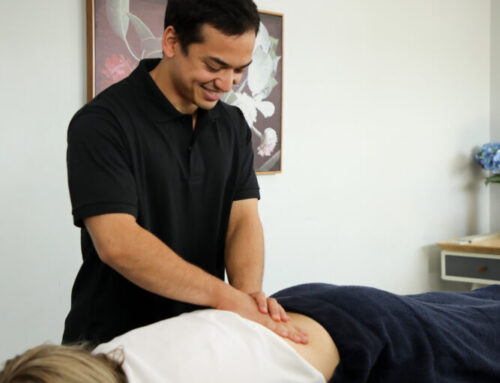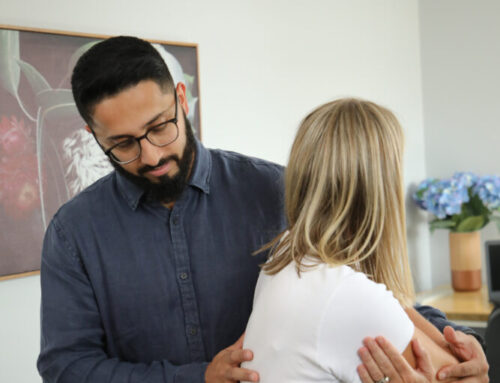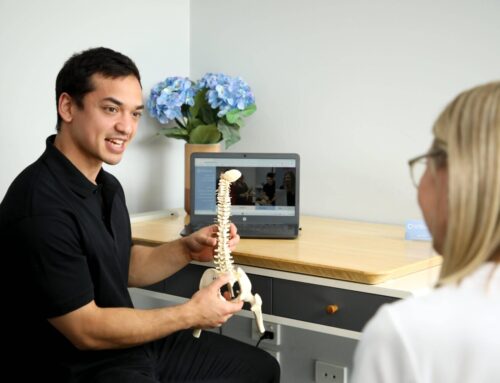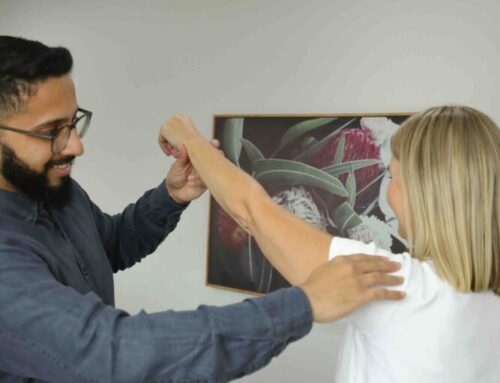Having played footy ever since I was an Auskicker at 5 years of age, I considered myself pretty lucky to have made it to my early 20’s without ever experiencing a major injury. Last year, my luck eventually ran out when I suffered a mid-season injury during a footy game.
 The Injury
The Injury
With 20 minutes left in the game, a couple of opposition players landed awkwardly on my ankle in a tackle. I heard a snap, and my ankle felt like it collapsed underneath me, leaving me with instant pain. Being stubborn and wanting to soldier on, I tried to walk but couldn’t make it further than one step (in over my head – get the stretcher out!!).
The Diagnosis

After hobbling off the field and a visit to the emergency department, I was told I had fractured my fibula and suffered a ruptured syndesmosis and anterior talo-fibular ligament (ligaments at the front of the ankle joint).
After a chat with an ankle surgeon, surgery was my only option if I wanted to play footy again. It was booked in for 2 weeks’ time. I was advised that the next 3 months would look like this:
- Ankle plaster cast for 4 weeks
- Moon boot & crutches for 6 weeks
- Moon boot only for 2 weeks
- 8 seasons of Game of Thrones to be watched.
The Treatment Plan
 A couple of days after my injury, I sought out a local rehabilitation centre and involved an osteopath and an exercise physiologist (EP) to guide my rehabilitation.
A couple of days after my injury, I sought out a local rehabilitation centre and involved an osteopath and an exercise physiologist (EP) to guide my rehabilitation.
Even though my ankle was in a plaster cast, the osteopath could still test the rest of my body, finding what movements and exercises I was able to do that wouldn’t cause pain. On top of this, a plan was created to achieve goals along the way, with an eventual aim to return to sport.
From the very first session, treatment included exercises to keep the lower body as strong as we could, while maintaining upper body strength and fitness. I was amazed at how many exercises the body was able to still do while being in a cast, or in a moon boot, or on crutches. Plus, it meant everyone else in the gym had to bring my weights over for me which was great!
 Strength work is vital to the timeline of recovery – limiting muscle wasting and weakness as much as possible would mean returning to running sooner.
Strength work is vital to the timeline of recovery – limiting muscle wasting and weakness as much as possible would mean returning to running sooner.
Although I am a qualified osteopath, having someone to guide my rehabilitation and hold me accountable was important to keep me motivated and on track because often that’s the hardest part.
In saying this, my recovery didn’t all lie in the hands of my osteopath and EP. I had to take an active role in my rehabilitation. Fast forward 7 months post-injury and I was back to playing footy after lots and lots of exercise & sport specific rehabilitation exercise.
What I Learnt From My Injury
This story highlights the importance of staying active, keeping fit and maintaining strength in the initial stages during the most debilitating period of your injury. Use this as the time to lay down the foundations of strength and fitness by taking advantage of what your body is still capable of achieving!
It might be tempting to lie in bed, rest and watch 100 movies, but finding pain free exercises and doing it consistently is often the best thing you can do to get you back to your best sooner. Get yourself an osteopath (and an EP if possible) to guide your journey from start to finish and keep you accountable so you can return to your chosen activity sooner rather than later!
Thanks for reading. If you have any questions about this article, please feel free to email my directly dylan@pakenhamosteopathy.com.au or to make an appointment call the clinic on 5941-4157 or book online here: https://www.pakenhamosteopathy.com.au/book-online/.




